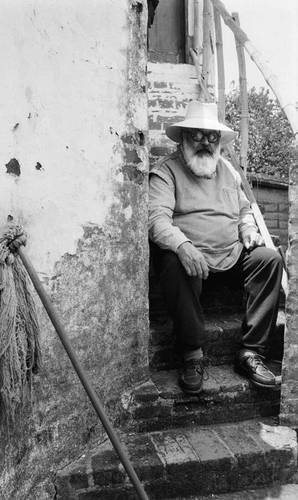The exponents of the Rupture generation have been relegated to the margins of collective memory, so it is necessary to restore their place in history
said the poet, art historian and curator Juan Rafael Coronel Rivera, regarding his most recent book dedicated to that artistic movement.
In interview with The Day, the ethnologist and editor also explained that “it is necessary to relaunch these artists along with their works so that people know them. I have even wanted to make an exhibition entitled Mask against hairto put the abstract representatives on one side and the figurative representatives on the other, since their movements were opposite.
“I decided to launch this work, Breaking off, because it is a very close topic in my personal life. I was an only child and my parents used to meet with disruptive exponents. Somehow I grew up with them, I began to listen to them carefully, I saw what they did while my interest in painting and my philosophical conception of art history were formed by many of their protagonists.
“One of the things they were concerned about was having a personal style; At that time, the fundamental thing was stylistic invention, unlike contemporary art, in which one day you can make a table and the next a sculpture, installation or video, and you don’t necessarily have to have a style, although a personal language is implicit.
Another of their peculiarities was their ideological position: they were not right-wing, but they did view the hegemony of the state left, derived from the Soviet dictator Stalin and the Chinese communist leader Mao Tse Tung, very poorly.
Published by Talamontes Editores, Breaking off compiles a series of essays and photographs in which Juan Rafael Coronel Rivera, son of the Zacatecan artist who died in 2019, narrates the development of a generation whose priority was to move away from nationalism, political radicalism and submission to the State.
However, the decades in which the Rupture took place (1952-1973) were framed by espionage, assassinations, political persecutions, American paranoia, the atomic bomb and invasions in Latin America.
Rufino Tamayo, Wolfgang Paalen, Remedios Varo, Gunther Gerzso, Leonora Carrington, Mathias Goeritz, Juan Soriano, Manuel Felguérez, Alberto Gironella, Fernando García Ponce, Tomás Parra, Francisco Toledo, Naomi Siegmann and Beatriz Zamora are some of the disruptors who appear in the issue. .
▲ The artist Alberto Gironella (1929-1999)Photo courtesy Talamontes Editores
▲ The poet Salvador Elizondo (1932-2006).Photo courtesy Talamontes Editores
Narrator and also photographer, Coronel Rivera (Mexico City, 1961) expressed his interest in reintroducing these artists to the contemporary public in order to value their contributions and prevent them from remaining forever forgotten.
“The movement had a very local importance, although the rupturists maintained a continuous state of creative, cognitive and spiritual freedom. It is evident that they were a spearhead on the national scene for many expressions to emerge; For example, Gironella made fantastic assemblages because he incorporated New Spain, pre-Columbian, ornamental pieces, with fabrics, volume, and sometimes he made furniture.
“Many members of the Ruptura had to be armed. They were politically persecuted, like Siqueiros and Revueltas. It was not a simple thing. Nowadays there is much more freedom, but at that time fighting for their ideals was serious, they practically risked their lives.
“From 1979 to date I have also worked as a curator. Now I only get involved in indigenous art or folk art projects. However, in all those years no national or foreign entity asked me to participate in an exhibition of the Rupture. They told me about Frida Kahlo, Diego Rivera, Orozco, Siqueiros, Tamayo and Francisco Toledo.
“This dissemination work is needed –in addition to money–, but initiatives like this represent a step to return to history in the Mexican art scene. I offer the reader a critical vision of the impact and relevance of this movement, and I hope to encourage greater interest to open a debate about the different perspectives and evolutions in Mexican art,” concluded Coronel Rivera.
The book Breaking off It was presented yesterday at the Kaluz Museum, where the author was accompanied by the promoter and cultural manager Miriam Kaiser, Ester Echeverria, curator and widow of the painter Enrique Echeverría, the artist Ximena Cuevas and Esteban García Brosseau, architect and doctor in art history.
